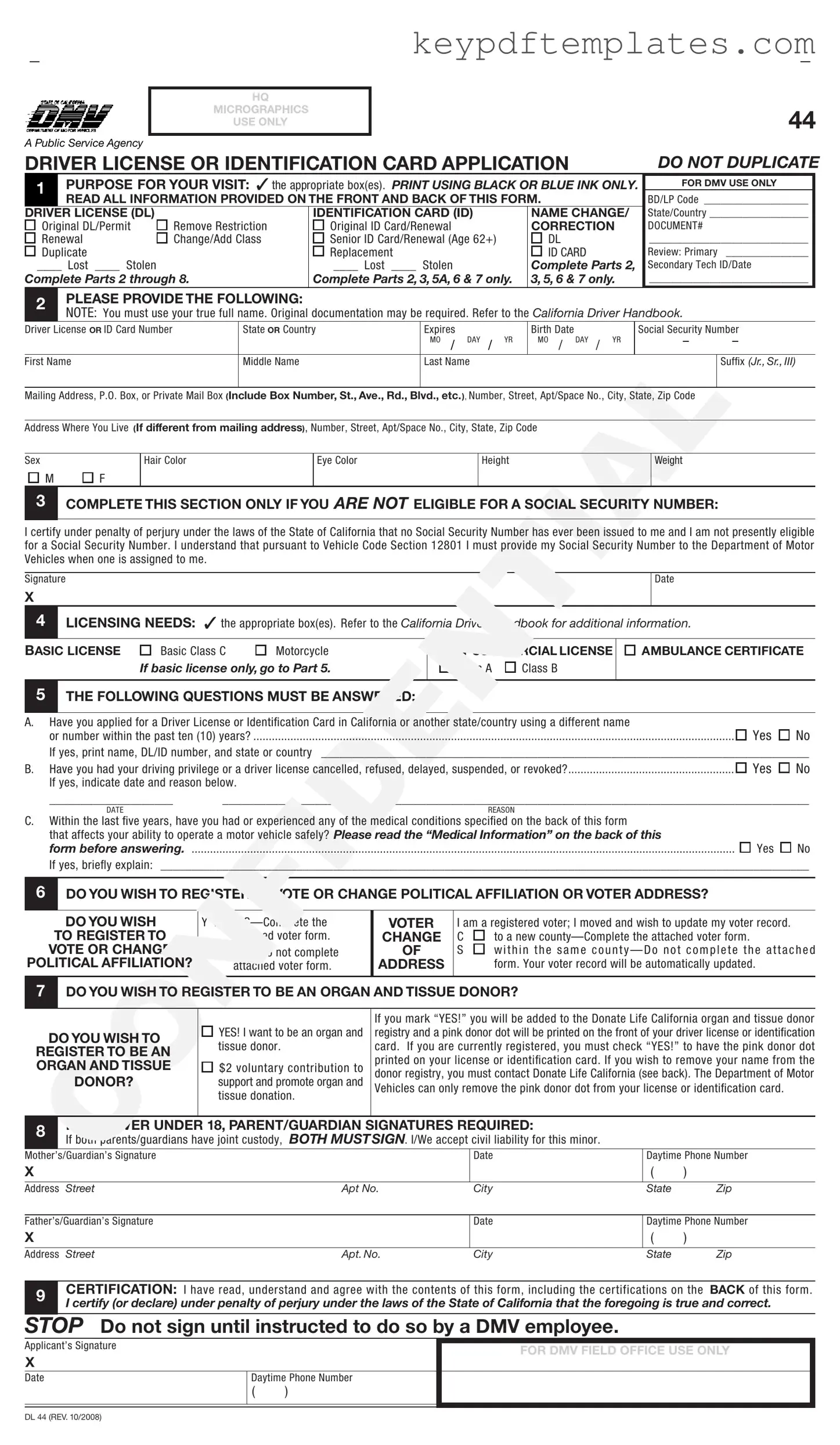Get Ca Dmv Dl 44 Form
The CA DMV DL 44 form is an essential application used to obtain a California driver license or identification card. This form serves multiple purposes, including applying for a new license, renewing an existing one, or changing personal information. Understanding its requirements and sections can streamline your visit to the DMV and ensure a smoother application process.
Modify Document Online
